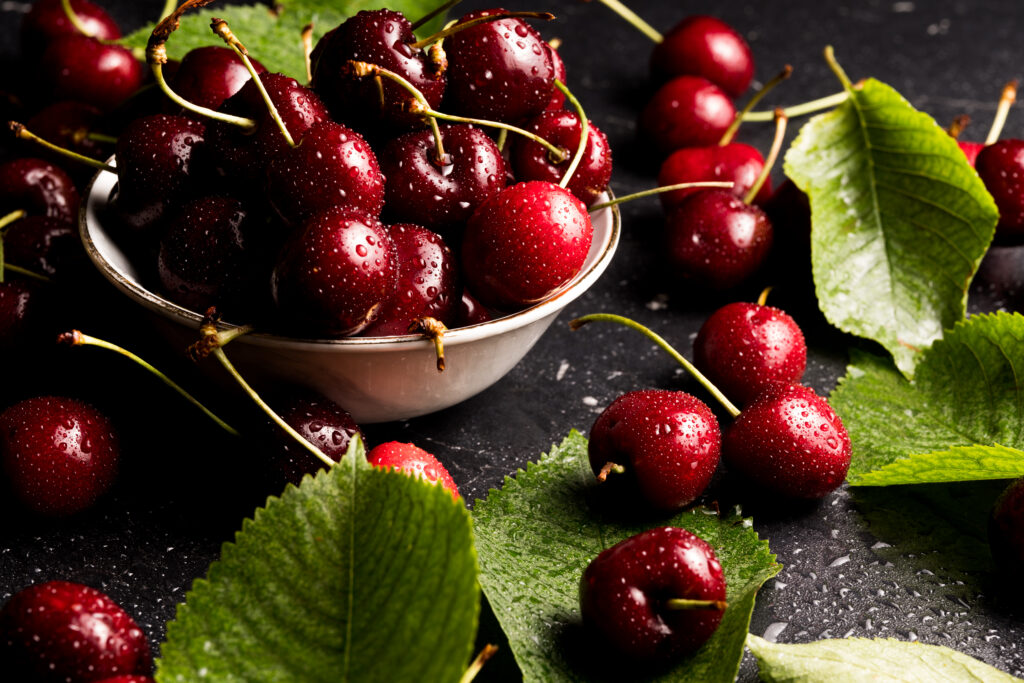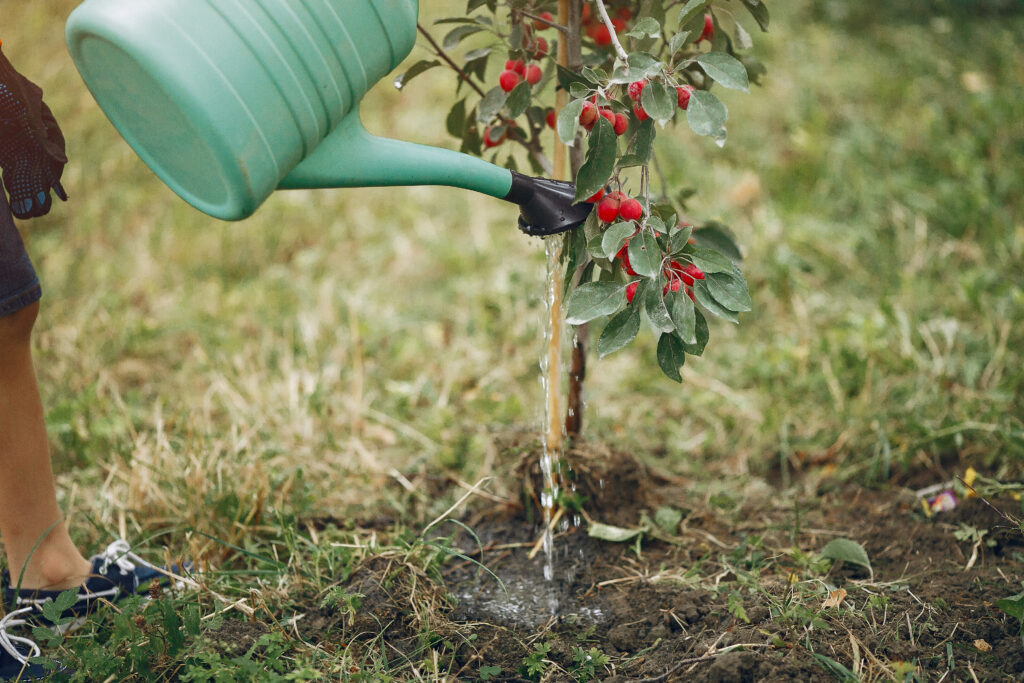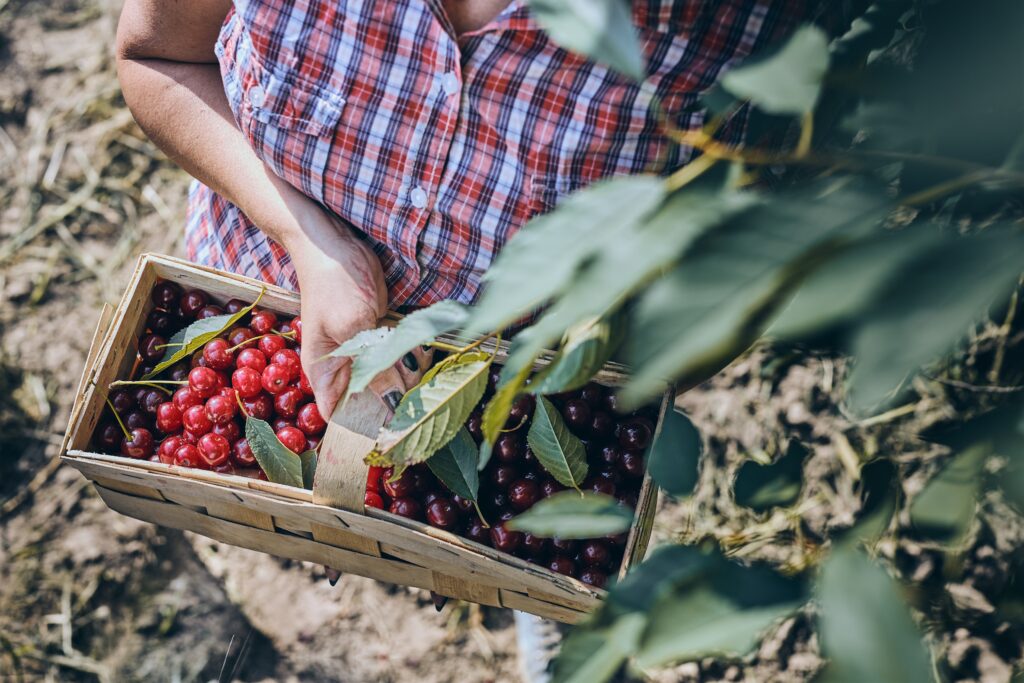
Introduction
Cherries are a delicious and versatile fruit, perfect for fresh eating, baking, or making preserves. Growing cherries in your garden can be a rewarding experience with the right care and attention. This guide will take you through the steps for planting, nurturing, and harvesting cherries, ensuring a successful crop.
Choosing the Right Cherry Variety
Before planting cherries, it’s crucial to choose a variety that fits your climate and garden space. There are two main types of cherries:
- Sweet Cherries (Prunus avium): These are best for fresh eating. Popular varieties include Bing and Stella, which grow well in USDA zones 5-7.
- Sour Cherries (Prunus cerasus): Often used for baking and preserves. Varieties like Montmorency and Morello thrive in zones 4-7 and are more cold-hardy.
Consider whether your cherry tree needs a pollination partner:
- Self-pollinating varieties: Some cherry trees, like Stella, can self-pollinate, meaning they don’t need another tree for fruit production.
- Cross-pollination: Many sweet cherries, like Bing, require a different variety nearby to cross-pollinate for a successful fruit set.
When to Plant Cherry Trees
The best time to plant cherry trees is in early spring or late fall when the tree is dormant. In cooler climates, early spring planting is preferable to avoid frost damage. For areas with mild winters, late fall planting is ideal, as it gives the roots time to establish before the growing season.
Selecting the Perfect Location
Cherries need a sunny, well-drained location to thrive. When choosing a spot in your garden, consider these factors:
- Sunlight: Plant cherries in a location that receives at least 6-8 hours of full sun each day. This ensures better fruit production and reduces the risk of fungal diseases.
- Soil: Cherry trees prefer slightly acidic, well-drained soil with a pH between 6.0 and 6.8. Amend the soil with organic compost to improve texture and drainage.
- Airflow: Good air circulation is important to prevent diseases like powdery mildew. Avoid low-lying areas where cold air and moisture may settle.
Planting Cherry Trees
Here’s a step-by-step guide to planting your cherry tree:
- Dig the Hole: Dig a hole that’s twice as wide and just as deep as the root ball of your cherry tree.
- Check for Spacing: Standard cherry trees should be spaced 20-30 feet apart, while dwarf varieties can be planted closer at 10-15 feet apart.
- Position the Tree: Place the tree in the hole with the graft union (the point where the tree was grafted onto rootstock) a few inches above the soil line.
- Backfill and Water: Backfill with the removed soil, gently firming it around the roots. Water thoroughly to help the tree settle.
Watering Cherry Trees

Proper watering is essential, especially in the first few years after planting:
- Regular Watering: Newly planted cherry trees need about 1 inch of water per week. Water deeply to encourage deep root growth but avoid waterlogging the soil.
- Mulching: Mulch around the base of the tree with organic materials like straw or wood chips to retain moisture and regulate soil temperature. Keep the mulch a few inches away from the trunk to prevent rot.
Once established, cherry trees are relatively drought-tolerant, but you should water them during extended dry periods, especially when the tree is fruiting.
Fertilizing Cherry Trees
herry trees don’t need excessive fertilizing, but providing them with the right nutrients ensures healthy growth and fruit production:
- Organic Fertilizer: Apply an organic fertilizer or compost in early spring, just before the growing season begins.
- Nitrogen: Use a nitrogen-rich fertilizer sparingly. Excess nitrogen can lead to excessive foliage growth at the expense of fruit.
- Feed Regularly: Apply a balanced fertilizer once a year in the spring. Avoid over-fertilizing, as this can lead to poor fruit production and weak growth.
Pruning Cherry Trees
Pruning is critical for maintaining the shape of your cherry tree, promoting good airflow, and encouraging fruit production. Here’s how to do it:
- When to Prune: Prune cherry trees in late winter or early spring before new growth begins. Avoid pruning in wet weather to reduce the risk of disease.
- Remove Deadwood: Start by removing any dead, damaged, or diseased branches to improve the tree’s overall health.
- Shape the Tree: Thin out crowded branches to improve airflow and allow sunlight to reach all parts of the tree. Focus on creating an open, vase-like shape.
Pruning encourages strong branches and helps prevent diseases by improving air circulation.
Pollination
Most cherry trees require cross-pollination to bear fruit. Here’s how to ensure proper pollination:
- Plant Multiple Trees: If you’re growing sweet cherries, plant at least two different varieties that bloom at the same time to ensure cross-pollination.
- Attract Pollinators: Encourage bees and other pollinators to visit your garden by planting flowers like lavender or marigolds nearby.
Sour cherries are usually self-pollinating, meaning they can bear fruit without a pollination partner.
Protecting Cherries from Pests and Diseases
Cherry trees are vulnerable to several pests and diseases, but proactive care can help prevent issues:
- Cherry Fruit Fly: These pests can damage fruit as they lay eggs inside. Use sticky traps or insect netting to control infestations.
- Birds: Birds love cherries as much as we do! Protect your crop with bird netting or use reflective tape to scare them away.
- Powdery Mildew: This fungal disease can affect cherry leaves and fruit. Prune regularly to improve air circulation, and apply an organic fungicide if necessary.
Regularly inspect your tree for signs of pests or disease, and address issues promptly to ensure a healthy crop.
Harvesting Cherries

Cherries typically begin to bear fruit within 3-5 years of planting, depending on the variety. Here’s how to know when to harvest:
- Ripeness: Cherries are ready to harvest when they are full-colored (dark red for most varieties) and firm to the touch.
- Ease of Picking: Ripe cherries will easily detach from the stem when gently pulled.
- Harvest Regularly: Cherries ripen over a few weeks, so pick them regularly to ensure the best flavor and texture.
Once harvested, cherries can be eaten fresh, preserved, or frozen for long-term storage.
Companion Planting for Cherry Trees
Certain plants can help enhance the growth and health of your cherry trees by attracting beneficial insects or improving soil conditions:
- Garlic and Marigolds: Both plants deter pests like aphids and nematodes.
- Comfrey: This plant improves soil health and attracts pollinators, making it a great companion for cherry trees.
- Lavender: Not only does it attract bees for pollination, but lavender also helps deter harmful insects.
Final Thoughts
Growing cherries at home can be a rewarding experience, offering delicious fruit and a beautiful garden addition. With the right care—from choosing the appropriate variety to providing proper watering and pruning—you can enjoy fresh cherries straight from your garden for years to come.
